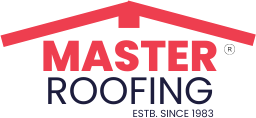Your roof is arguably the most critical component of your home’s exterior, serving as its primary defense against the elements. From scorching sun and torrential rain to strong winds and falling debris, it constantly shields your living space and everything within it. Yet, it’s often the most overlooked part of a house until a problem becomes undeniable – usually in the form of a leak or visible damage. Regular “health checks” of your roof are not just about preventing costly repairs; they are about extending its lifespan, maintaining your home’s energy efficiency, and ensuring the safety and comfort of your family. Understanding the warning signs and knowing what questions to ask can empower you to take proactive steps, saving you significant headaches and expenses down the line.
Four Key Questions for Your Roof’s Health Check:
To effectively assess your roof’s condition, consider these four crucial questions:
Are There Any Visible Signs of Damage or Wear on the Shingles/Materials?
Begin your health check by looking for obvious physical distress. For asphalt shingles, are they curling, cracking, blistering, or missing entirely? Granule loss, which often appears as sand-like particles in your gutters, is a significant indicator of aging. For other materials like metal, are there signs of rust, dents, loose seams, or fasteners? With tile or slate roofs, look for chips, cracks, or displaced pieces. Even minor damage can compromise the entire roofing system, allowing water to penetrate. Pay particular attention to areas around chimneys, skylights, vents, and valleys, as these are common weak points where different materials meet.
Is There Any Evidence of Water Stains, Discoloration, or Moisture Indoors?
While the roof’s exterior tells one story, the interior of your home often reveals the true extent of a problem. Head into your attic or upper floors and look for water stains on ceilings, walls, or in the attic insulation. These stains can be yellow, brown, or dark and often indicate a leak that has been present for some time. Also, be alert for musty odors, which can signal the presence of mold or mildew resulting from moisture intrusion. Even if you don’t see direct dripping, persistent dampness is a red flag that your roof’s integrity has been compromised.
Are Your Gutters and Downspouts Functioning Correctly, and Are They Free of Debris?
A healthy roof relies heavily on an efficient drainage system. Clogged gutters can cause water to back up onto the roof, leading to rot, fascia damage, and ice dams in colder climates. Ensure your gutters are firmly attached, free of leaves, twigs, and shingle granules, and that downspouts direct water away from your home’s foundation. Also, observe if there are any signs of water overflowing the gutters during rain, which suggests blockages or improper sizing. Proper drainage prevents water from lingering on the roof surface or seeping into the eaves, protecting the entire structure.
How Old Is Your Roof, and Does It Align with Its Expected Lifespan?
Even if your roof shows no immediate signs of distress, its age is a critical factor in its overall health assessment. Different roofing materials have varying lifespans: asphalt shingles typically last 20-30 years, metal roofs 40-70 years, and tile/slate can last 50-100+ years. If your roof is approaching or has exceeded its expected lifespan, it’s wise to budget for a replacement, even if it seems okay. Older roofs are inherently more susceptible to damage from severe weather and can quickly deteriorate, leading to emergency repairs that are often more expensive than planned replacements. Knowing its age helps you proactively plan for future needs.
Conclusion
Your roof is an investment that tirelessly protects your most valuable asset – your home. By regularly conducting these simple health checks and asking the right questions, you can identify potential issues early, extend your roof’s service life, and avoid the stress and expense of major unexpected repairs. Don’t wait for a drip to alert you to a problem. Proactive maintenance is the best strategy for a healthy, long-lasting roof and, by extension, a secure and comfortable home.

